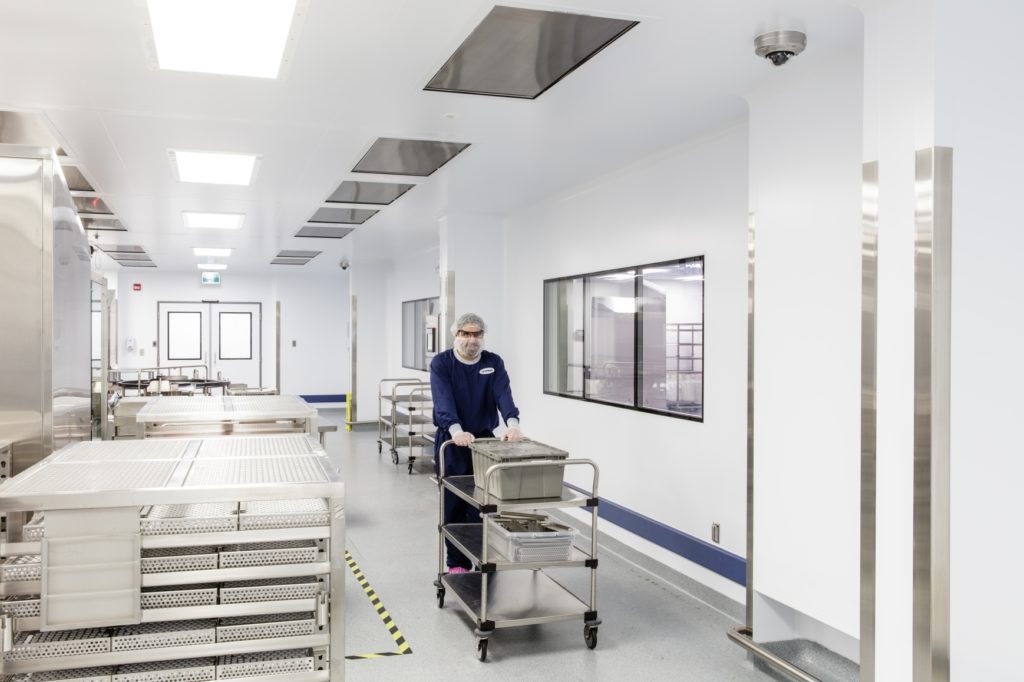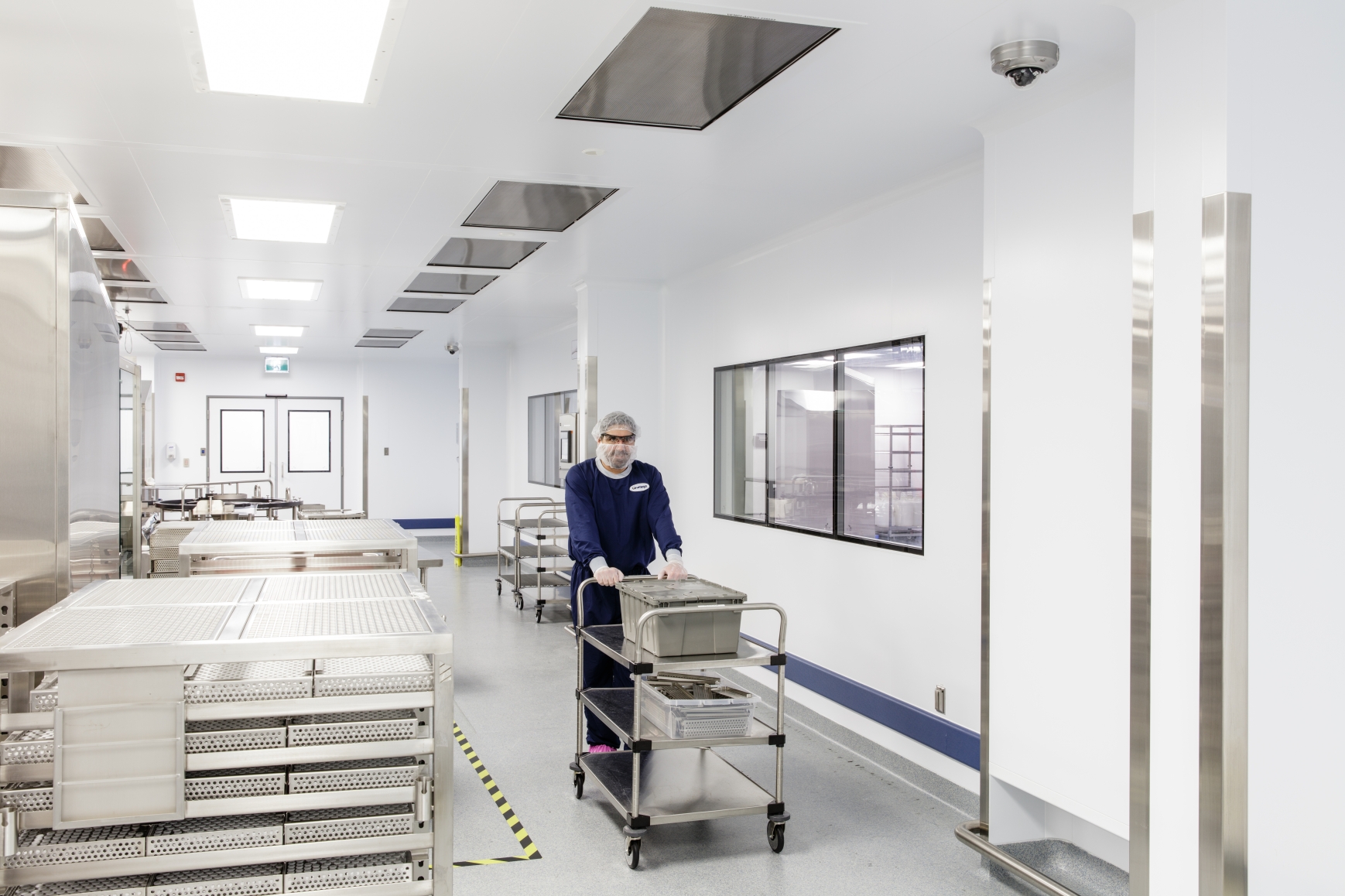Preventative Cleanroom Maintenance: Protecting Your Investment and Reducing Risk
By Chad Smith and Tom Snyder 
An FDA-validated cleanroom represents a significant investment of time, money, and prestige for any organization. Retaining validation is job one for any facility manager. Your modular cleanroom preventative maintenance program is the first step in retaining validation, and the experts at AES Clean Technology are here to help.
We know firsthand that the two biggest fears of any facility manager are unnecessary downtime and incurring an Out of Specification (OOS) event. A diligent, practical plan for preventative maintenance will significantly reduce your risk of downtime, keep you in compliance and increase your peace of mind.
Inspect Your Cleanroom to Stay in Spec
The road to FDA validation begins at the concept design of a given cleanroom facility. Preventative maintenance starts with your baseline standards for air quality and facility repair—all of which flows from your cleanroom design concept.
To stay in compliance and form, an effective maintenance program requires you to know your cleanroom’s specifications and understanding what optimal conditions look like. In other words, know your baseline. From that point, you need routine inspections to spot potential trouble signs before they become bigger and costlier.
The Living Cleanroom
You can think of any cleanroom design in terms of two complementary systems: the mechanical system, which handles airflow, and the architectural system, which consists of the doors, floors and ceilings of your cleanroom.
The mechanical system represents the lungs of your cleanroom, and your routine inspection will focus on air quality measurements—ensuring they remain within specifications—and the state of the filters in your air handlers. From there, you want to inspect caulking and ensure everything is sealed tight to preserve the quality of airflow.
Inspecting the architectural system involves a closer look at the wear and tear across the board, with a particular look at your AES modular walls and doors. Damage–even small dings–could, in time, lead to more extensive interruptions to the seal of your cleanroom facility.
While cleaning is an important factor for both mechanical and architectural systems, cleaning agents themselves might be a source of maintenance issues. Strong solvents, for example, will eat away at surfaces and caulking over time.
In many ways, a healthy, functioning cleanroom is like a healthy, fully functioning organism. Therefore, think of preventative maintenance as your cleanroom’s immune system. Knowing the signs of poor health will help you diagnose potential “diseases” while they’re still manageable.
The Human Factor
To paraphrase the old military adage, no maintenance plan entirely survives contact with cleanroom workers. In other words, your cleanroom maintenance plan will need to adapt to human behavior. In our experience, it is inevitable that somebody will make a mistake that could compromise a cleanroom–without even thinking about it. People use carts as battering rams to open doors. They pick at panels until they loosen. They clog air intakes with misplaced boxes or papers. Human error is another reason for vigilance when it comes to maintaining your cleanroom design build and ensuring the effectiveness of leading cleanroom technology.
There is no avoiding it, but you can account for the human factor and try to minimize its impact. First, you should empower your colleagues to spot and report potential maintenance issues. Second, you need to educate them on best practices, so you might want to work with your facility’s communications or HR team to create an employee outreach plan regarding safety and maintenance.
Likewise, consider our experts at AES Clean Technologiy to be part of your team. We can help you develop a plan that ensures your cleanroom facility remains in compliance and in service.
5 Points to Consider for Your Cleanroom
- Baselines: Benchmark your system performance in terms of both air quality and general repair and build your preventative maintenance program around those benchmarks.
- Communication: Human error drives many maintenance issues; partner with your HR/Communications teams to promote a culture of safe cleanroom practices.
- Behavior: Observe how cleanroom workers and cleaning personnel use the facility and what behaviors might, over time, lead to damage.
- Documentation: Log your routine maintenance and repairs as they may hold the key to diagnosing issues in the future.
- Declutter: Strive to decrease clutter in your cleanroom and remove the risk of foreign object debris that may injure your air handlers or walls.
Learn more and speak to an AES Clean Technology modular cleanroom expert today and see why we are considered the gold standard in the cleanroom industry.
About the Authors
Tom Snyder is a senior installation/training supervisor. He has been installing AES cleanrooms for the past 20 years.. He is now using his experience to train new installation personnel and project managers, as well as other contractors, on the installation of the AES cleanroom systems.

